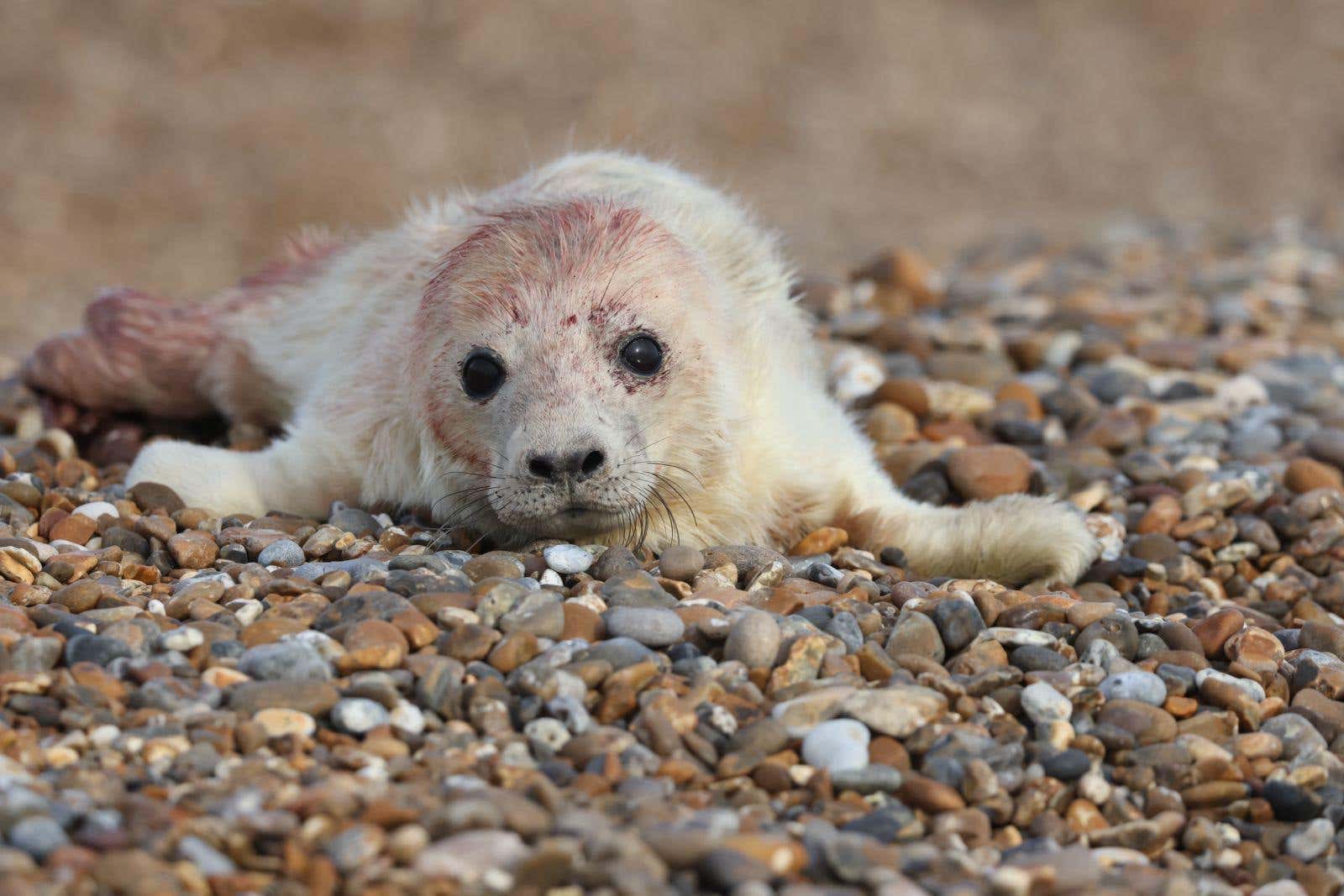First grey seal pup of the season born at coastal ex-military site
Orford Ness in Suffolk was used as a military test site during both world wars and into the nuclear age and was sold to the National Trust in 1993.

Your support helps us to tell the story
From reproductive rights to climate change to Big Tech, The Independent is on the ground when the story is developing. Whether it's investigating the financials of Elon Musk's pro-Trump PAC or producing our latest documentary, 'The A Word', which shines a light on the American women fighting for reproductive rights, we know how important it is to parse out the facts from the messaging.
At such a critical moment in US history, we need reporters on the ground. Your donation allows us to keep sending journalists to speak to both sides of the story.
The Independent is trusted by Americans across the entire political spectrum. And unlike many other quality news outlets, we choose not to lock Americans out of our reporting and analysis with paywalls. We believe quality journalism should be available to everyone, paid for by those who can afford it.
Your support makes all the difference.The first grey seal pup of the season has been born at a remote shingle spit that was once a Cold War weapons testing site.
The birth at Orford Ness on the Suffolk coast marks the fourth consecutive year of seals breeding there.
This began in 2021 following a reduction in visitor access because of the pandemic.
It is thought the blubbery mammals spilled over from well-populated colonies in Norfolk, including at Blakeney and at Horsey, and are now Suffolk’s first breeding grey seal colony.
The National Trust said more than 130 seal pups were born at Orford Ness during the 2023-24 breeding season, which runs between October and March when the site is closed to visitors.
The first pup born this season arrived around a week earlier than last year’s.
Matt Wilson, countryside manager for the Suffolk and Essex coast portfolio at the National Trust, said: “We’ve been eagerly awaiting the arrival of this year’s seal pups.
“Since October, our team have been avidly monitoring the shores of the Ness from a safe distance and performing regular counts of the adult seals, with some records showing over 400 adults.
“The first pup has arrived around a week earlier than last year, which is something we’ve observed in rookeries elsewhere in the UK.”
Female grey seals, known as cows, usually return to the same place each year to give birth.
Pups typically weigh around 13kg (two stone) at birth and are covered in thick white fur, which keeps them warm but is not waterproof.
They remain on the shore until they have shed this coat, revealing sleek grey fur underneath, by around three weeks.
They feed six times a day during this period and will have increased in weight by around treble by the time they are weaned.
“Understandably, this is a crucial stage of their development,” said Mr Wilson.
“To give them the best chance of survival, we limit access to the colony and monitor them only from a safe distance.”
It is thought that seals have thrived at the site in part due to its remote location, restricted access and limited disturbance.
Orford Ness was used as a military test site during both world wars and into the nuclear age, before the Ministry of Defence sold it to the National Trust in 1993.
The first 200 adult seals arrived in 2021 and rangers have recorded an annual increase in numbers as the colony has grown.
Glen Pearce, Orford Ness’s property operations manager, said they “held off talking about” the seals until earlier this year “because we wanted to give them the best chance of survival”.
“We’re asking people to refrain from visiting out of season and to avoid using drones or other aerial equipment in the area,” he said.
“It’s important people remember that unauthorised access, by foot, boat or drone, is not only illegal but also dangerous because of the unique and remote nature of the former military site.
“We really hope visitors will continue to work with us to help protect the colony, which is such a brilliant wildlife success story for Suffolk.”